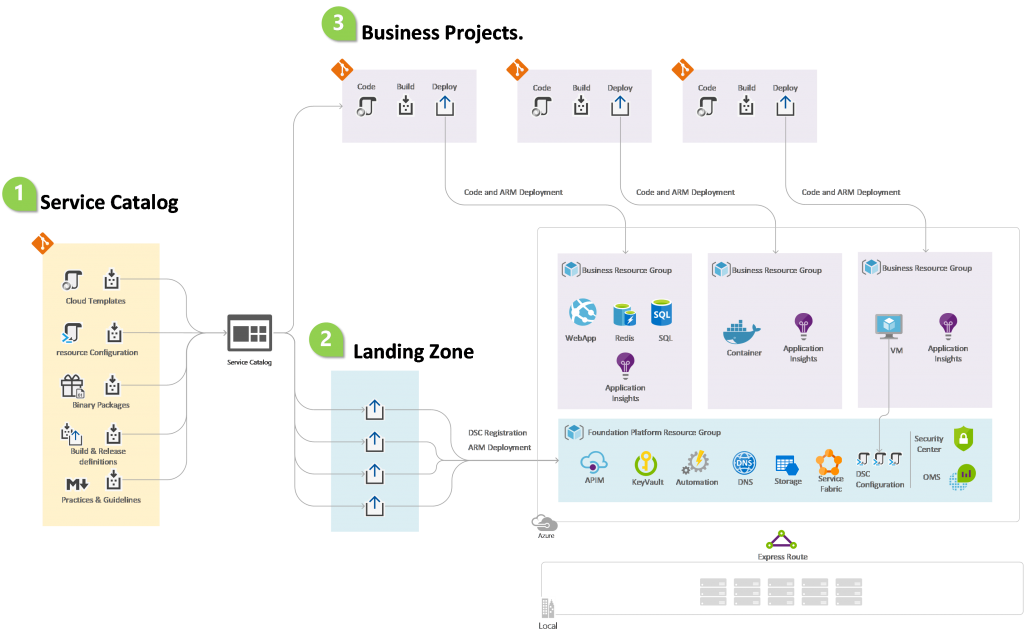ENTERPRISE PORTFOLIO MODERNIZATION AT SCALE
October 25, 2019
As the journey to cloud continues to gather pace, I have been looking at how to accelerate the adoption of the enterprise cloud. In the second of my blog series on this subject, I’m focusing on how to achieve consistency and compliancy at scale with an enterprise cloud and service catalog.
This ties back to my first blog on adopting a DevOps approach. How? Because this consistency is an example of an enterprise DevOps challenge. Large and regulated implementations have different needs as a single team project. These needs are often for non-functional business quality attributes, like security, governance, maintainability and more.
Enterprise compliancy due to regulation needs to be in place for every system in the cloud. When DevOps teams can re-use resources and land on a platform that is already compliant, they don’t have to build it themselves and so their DevOps becomes more reliable, compliant and regulated, while staying fast and flexible.
The importance of landing zones
When an enterprise adopts a cloud platform it should focus on the configuration of the landing zone for its business systems. To make the public cloud compliant with enterprise regulations, this cloud platform needs to be configured in a specific way.
A cloud landing zone within a company provides a specific set of capabilities to business systems – to the DevOps teams. These capabilities can be as simple as an identity store, like Azure Active Directory, which every business system can use to provide login capabilities. Or it can be a complete set of specific build and configured resources for the business or industry.
As an example, the diagram here shows a company platform that uses the cloud platform capabilities to expose company-specific capabilities to the business systems.

What’s important is the relationship between the landing zone, the company platform and the business systems. This relation should be the same as the relationship between the cloud provider and the company, a service provider versus a service consumer model. Enterprise IT organizations are becoming service providers, providing the agility that the business teams require. At the same time, they’re taking care that company security and governance regulations are being met via the company platform.
The importance of a service catalog
When knowing the concept of a landing zone and the responsibility as a service provider for business teams. The Enterprise IT organizations should make it as easy and comfortable for the business DevOps teams to stay compliant and regulated while staying a real DevOps team. A DevOps team is responsible for its own application and infrastructure. They should be able to release hundreds of times a day and experiment with new infrastructures.
A service catalog with cloud infrastructures that can be used by Enterprise DevOps teams to provision their own infrastructure, will make the enterprise cloud adoption consistent and regulated.
A summary of the Enterprise cloud adoption setup, in a consistent and regulated way is visualized in the below image.
- The service catalog contains the cloud resources and automation for creating cloud resources. These items are validated and have strong governance.
- The landing zone is designed and setup to take care of the capabilities needed by the business DevOps teams.
- The business DevOps teams need to stay fast, flexible and responsible for their own infrastructure and application. While using the service catalog for their cloud infrastructure and deploy it on the landing zone they will be consistent and compliant with company rules.

A setup for Enterprise Portfolio Modernization at a scale that brings full cloud benefits with DevOps while staying compliant and consistent.
This is the second in my series about enterprise cloud adoption. In Blog No 3, I will be discussing the role of continuous testing – and continuous ‘everything’ – in accelerating the move to cloud.
To find out how Sogeti can help you in your cloud transformation journey and to read more blogs on similar topics, visit our Enterprise Portfolio Modernization page.

 English | EN
English | EN 